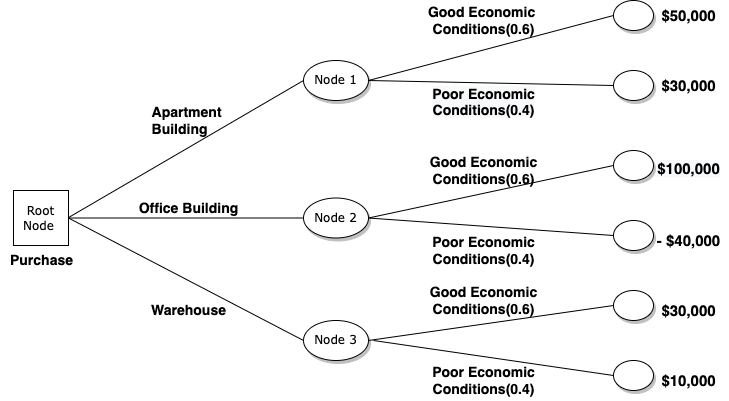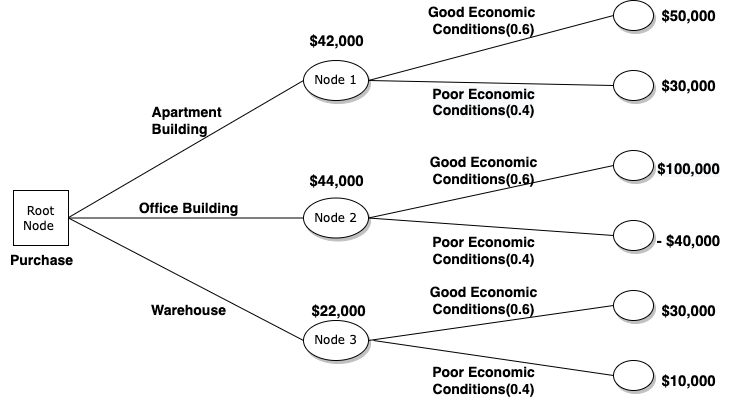Contemporary management challenges are influenced, not only by isolated decisions, but also a sequence of decisions. Moreover, today’s decisions will set the stage for future decisions. Furthermore, uncertainty further accentuates the situation as our current learnings and experiences determine future decisions. Hence, we could represent issues are a tree of decisions.
Decision trees – a decision-making framework – enables transcending superficial, one-cause, one-effect relationships. They also help discover and describe things in the context of multiple influences. The Decision Tree Framework is a robust decision scaling approach that adopts a visual representation that helps thoroughly understand a project’s vulnerabilities. Thus, decision trees can help appraise management choices, risks, objectives, and monetary gains associated with a decision.
Origin
The history depicts decision trees as a powerful tool for interpreting results with an intuitive tree-like display that enhances understanding and disseminates results. The origins of decision trees trace back to the era of the development of written records. The Greek philosopher Porphyry devised a form of the decision tree, Porphyrian tree, which is the oldest known classification tree that dates back to the 3rd century C.E.
Around the 1960s, the concept of decision trees as a decision-making tool developed. The earliest use of decision trees in management decision-making appears in articles “How to Use Decision Trees in Capital Investments,” and “Decision Trees for Decision Making” by John F. Magee, in the July-August and September-October issues of the Harvard Business Review published in 1964.
In the 20th century, computational decision trees also emerged simultaneously as the developing fields of Artificial Intelligence and Statistical Analysis. The computational origins of decision trees are models of biological and cognitive processes. Frank P. Ramsey, in 1931, was the first to develop a methodology of decision analysis. This was based on probability and utility. Modern versions of decision trees trace their roots to the research done by Dr. William Belson in the 1950s of nationwide audience surveys on behalf of the British Broadcasting Corporation.
The Model
A decision tree helps analyze options and determine steps in a process wherein each decision leads to another step in the decision-making process until management reaches a final decision. Decision trees allows considering both, favorable outcomes and potential consequences.
Characteristics
Decision trees earn their name from their resemblance to the trunks and branches of a tree. The main trunk is the decision to be made. Each main branch is one option that can be part of the decision-making process. The smaller branches represent potential outcomes. The decision point is called a node, like a fork in a tree branch. The associated terminologies with a decision tree are:
- Root Node: Root node is from where the decision tree starts
- Leaf Node: Leaf nodes are the final output node
- Splitting: Splitting is the process of dividing the decision node into sub-nodes according to the given conditions
- Sub Tree: Branch is a tree formed by splitting the tree
- Pruning: Pruning is the removal of unwanted branches from the tree
Following is the description of symbols used in a decision tree:

Tools
Decision trees can be created by simply drawing them on a whiteboard or piece of paper. Today, however, there are several digital tools exist to create decision trees. These tools provide an excellent medium to gather feedback and suggestions from the team and real-time collaboration. The digital tools include add-ins for Spreadsheets, websites with templates or online drawing tools, and web applications.
Methodology
The process of making a decision tree is as follows:
Identify all the options to complete the project
Make a set of relevant variables or decision parameters and include all the existing options. These variables will act as nodes of the tree
Assess the relative importance of variables
A hierarchy needs to be established between the parameters based on evaluating the results each option will bring. The most important parameter will be the root node, and the rest of the nodes are assigned accordingly based on decreasing importance
Analyze the results
Analyze each of the results presented in the decision tree. By considering the limitations and objectives of the project, determine how acceptable the different outcomes are
Optimize decisions
This involves determining options that best fit the project. The decision tree is used to decide which options have the highest probability of success and the most significant benefits
A Decision Tree Problem
The problem statement involves purchasing either an apartment, office or warehouse. Following are the steps to follow to make a decision using the decision tree:

- Circles 2, 3, and 4 represent probabilities where uncertainty is involved. The branches of the circles have 2 possible states: good economic conditions (probability of 60%) and poor economic conditions (probability of 40%)
- The next step involves estimating the probable payoff for the two possible states and then computing backward the expected value at each circle node
- Expected value at:
- 1st node (Node 1): 0.60($50,000) + 0.40($30,000) = $42,000
- 2nd node (Node 2): 0.60($100,000) + 0.40(-$40,000) = $44,000
- 3rd node (Node 3): 0.60($30,000) + 0.40($10,000) = $22,000
- These expected values are then written over top of their corresponding nodes in a square box for easy access and understanding

Result: The optimal choice is to select node 3(office building) since it has the highest expected payoff of $44,000
Applications
Decision tree analysis has many applications in each area, where management must choose from several available alternatives. In business, decision trees help a company develop its business and invest in new projects. Some business applications are
- Product Purchase Decisions: Decision trees are used for several business settings, from selecting new product lines to designing customer loyalty programs.
- Investment Strategies: Decision Trees can help identify which stocks to buy using a price range and sector preference parameters.
- Engineering: Decision trees are widely used to check energy consumption and fault diagnosis.
- Customer Relationship Management: A frequently used approach to manage customers’ relationships by decision tree is to investigate how individuals access online services.
- Project Risk Management: Decision Trees can help identify risk using cause and effect diagrams based on hierarchy processes, and responses are developed utilizing the risk map. It also allows the modeling of various options for risk response development and optimizes the selection of risk-mitigating strategies.
Decision trees turn out to be well adapted to mechanical calculators using Hollerith punch cards because of the sorting and selection characteristics of the algorithm and the avoidance of, e.g., any matrix-based computations. A decision tree is also used to help build automated predictive models, which have applications in machine learning, data mining, and statistics.
Case Study: Brandon Appliance Corporation
Brandon Appliance Corporation was founded in 1973 in Florida. It was a leading manufacturer of microwave ovens and was considering launching a new model. The company needed to choose a strategy for launching the new product line. The company management had to make the following decisions:
- Distribute the product nationally from the start
- Conduct a marketing test first, or
- Do not market the product at all
Brandon had to analyze the marketing test results before deciding whether to discontinue the product line or make it accessible for national distribution.
The finance department has provided certain cost information and likelihood assignments concerning this decision. The initial research and development costs had already been incurred and were unrelated to the marketing decision. Profits would increase by $5,000,000 if the product is a national success and decrease by $1,000,000 if it fails. Profits will be unaffected if the product is abandoned. Brandon will have to pay an additional $35,000 for the test market analysis.
If a market test is not conducted, a national campaign’s chances of success are reduced to 60%. But, if a market test is performed, there is a 58% chance of a positive outcome. If test findings are favorable, the likelihood of national success is roughly 93%. However, if the test results are poor, the national success chance is around 14%. The following decision tree is based on information about cash flows and probability assignments using which a strategy of an initial choice and any subsequent choices that the company must make.

Advantages
Decision trees:
- Are intuitive and easy to explain model for technical teams and stakeholders
- Offers flexibility to explore and predict outcomes to decisions, regardless of when they occur
- Allow analyzing the possible consequences of a decision entirely
- Are Versatile and can handle multi-output problems
- Require little data preparation and can work with or without complex data
Disadvantages
Decision trees are:
- Less effective in predicting the outcome of an extensive choice set
- Not suitable for a large number of decision parameters as a single tree may grow complex
- Unstable since adding a new option can lead to regeneration of the complete tree, and all nodes need to be recalculated and recreated
- Visual tools that clearly demonstrate the direct benefits of the decisions, but indirect benefits are hard to predetermine




